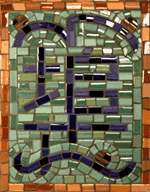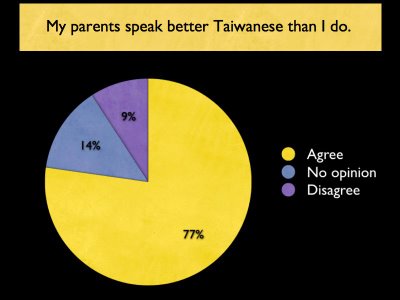Here are some books I recommend. You may still have time to buy some of these for others (or persuade others to buy for you) before Christmas.
In a departure from my usual practice, all of the images below are linked to Amazon — in part to make things easier for most readers of this site but also because I’m a bit curious to see if the potential kickbacks from that site would ever add up to enough to buy myself some books I’ve been wanting. Mainly, though, I’d like to see these books make it into the hands of more readers. This isn’t meant to be a complete list; but it’s a good start.
One of these days I’ll post about the works below I haven’t written about previously.
Dictionaries

 ABC Chinese-English Comprehensive Dictionary
ABC Chinese-English Comprehensive Dictionary, edited by John DeFrancis. The best large Mandarin-English dictionary. Entries are arranged alphabetically, by words, rather than head Chinese characters. Note: This is a Mandarin –> English dictionary and does not offer an English –> Mandarin section. For an e-edition (which does allow for the lookup of English words), get Wenlin (see below).
Sample of what entries in this dictionary look like.
Readers

 Chinese Biographies: Lang Lang
Chinese Biographies: Lang Lang, by Grace Wu. Pinyin-annotated biography of pianist Lang Lang, with English notes. There’s also a helpful
Web site with additional resources. Ideal for beginning and intermediate students.

 Chinese Biographies: Yao Ming
Chinese Biographies: Yao Ming, by Grace Wu. Pinyin-annotated biography of basketball star Yao Ming, with English notes. There’s also a helpful
Web site with additional resources. Ideal for beginning and intermediate students.

 The Besieged City (Abridged Chinese Classic Series)
The Besieged City (Abridged Chinese Classic Series), by Qian Zhongshu. Pinyin-annotated abridged version of a
terrific Chinese novel
. With notes in English, proper word-parsed Hanyu Pinyin for the entire text, simplified Chinese characters, and a CD with MP3 files of the entire book being read aloud.
Excerpt.

 Family
Family (abridged and annotated edition, with full Hanyu Pinyin), by Ba Jin. With notes in English, proper word-parsed Hanyu Pinyin for the entire text, simplified Chinese characters, and a CD with MP3 files of the entire book being read aloud.
Excerpt.

 Spring
Spring (abridged and annotated edition, with full Hanyu Pinyin), by Ba Jin. With notes in English, proper word-parsed Hanyu Pinyin for the entire text, simplified Chinese characters, and a CD with MP3 files of the entire book being read aloud.
Excerpt.

 Autumn
Autumn, (abridged and annotated edition, with full Hanyu Pinyin), by Ba Jin. With notes in English, proper word-parsed Hanyu Pinyin for the entire text, simplified Chinese characters, and a CD with MP3 files of the entire book being read aloud.
Excerpts.
Textbooks

 Basic Spoken Chinese: An Introduction to Speaking and Listening for Beginners
Basic Spoken Chinese: An Introduction to Speaking and Listening for Beginners, by Cornelius C. Kubler. Although this book is not in orthographically standard Pinyin, it’s nonetheless strong. A practical, real-world textbook that focuses on learning the language, not getting beginners bogged down memorizing character after character.

 Fundamental Spoken Chinese
Fundamental Spoken Chinese, by Robert Sanders. Another excellent textbook. Audio files are available online.
Excerpt.
Background

 The Chinese Language: Fact and Fantasy
The Chinese Language: Fact and Fantasy, by John DeFrancis. Essential reading. This book will inoculate you against the absolute nonsense that many people — including all too many teachers — believe about Chinese characters.
Excerpt.

 Asia’s Orthographic Dilemma
Asia’s Orthographic Dilemma, by William C. Hannas. A wide-ranging, detailed book that discusses some of the drawbacks of the continued use of Chinese characters.
Excerpt.

 Mandarin Chinese: A Functional Reference Grammar
Mandarin Chinese: A Functional Reference Grammar, by Li and Thompson. Good for the linguistically inclined. Just about the only Chinese characters in this book are on the cover, which, yes, I consider to be a
good thing.
Software


Wenlin software for learning Chinese, version 4. I use this on a daily basis. This incorporates both dictionaries listed above.
Beyond This List
Here are some things not listed above, in most cases because Amazon doesn’t stock them.
- Pinyin Riji Duanwen, by Zhang Liqing. A book of largely autobiographical short stories, written entirely in Hanyu Pinyin (except for one brief letter in English). For intermediate and advanced learners — and for native speakers of Mandarin as well. At just US$5, plus shipping, this is the least expensive work on this list. The complete text is also available for free online, though a URL just doesn’t have that same Christmas feeling as a physical book, does it?
- Any or all of the three volumes in Y.R. Chao’s Sayable Chinese series. For intermediate and advanced learners — and for native speakers of Mandarin as well. Note: These books are in Chinese characters and Gwoyeu Romatzyh, not Hanyu Pinyin, so for most people the learning curve is steeper than for reading something in Hanyu Pinyin. With some notes in English. Excerpt (Gwoyeu Romatzyh column only).
- Other works on my recommended readings list, which may be available at Amazon but which may or may not fit well on a list for Mandarin learners.
- KEY5 2011 Multimedia — a different sort of software than Wenlin but one that offers excellent Pinyin support.















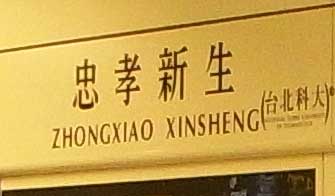 People generally don’t listen carefully to the announcements on the Taipei MRT, a subway/elevated train mass-transit system. With four languages to get through — Mandarin, Taiwanese, Hakka, and English — that’s a lot of talking. And anyway, the cars can be so full that it’s hard to hear such things clearly over all the background noise anyway. Still, you’d think that at least the people who make the recordings would be paying attention.
People generally don’t listen carefully to the announcements on the Taipei MRT, a subway/elevated train mass-transit system. With four languages to get through — Mandarin, Taiwanese, Hakka, and English — that’s a lot of talking. And anyway, the cars can be so full that it’s hard to hear such things clearly over all the background noise anyway. Still, you’d think that at least the people who make the recordings would be paying attention. 

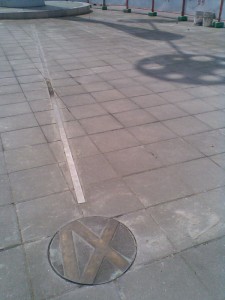
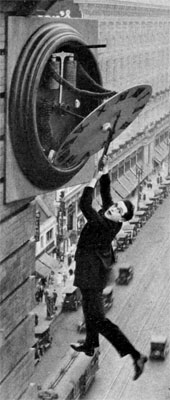 I contacted the Taipei City Government about this. They said to contact the Taiwan High Speed Rail Corporation, which I did. They, in turn, responded that I’d reached the wrong office and should write a different office; but they didn’t forward the message or provide me with the correct e-mail address. Once I’d tracked down another office I e-mailed the folk there. That was more than a week ago. There has been no response.
I contacted the Taipei City Government about this. They said to contact the Taiwan High Speed Rail Corporation, which I did. They, in turn, responded that I’d reached the wrong office and should write a different office; but they didn’t forward the message or provide me with the correct e-mail address. Once I’d tracked down another office I e-mailed the folk there. That was more than a week ago. There has been no response. 